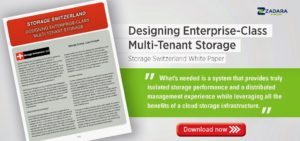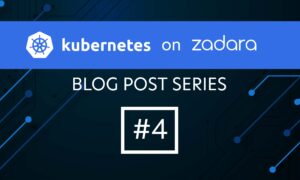Multi-Tenancy
Cloud multi-tenant architecture, a shared architecture in which storage and networking resources are used by multiple users (or tenants), has revolutionized storage efficiencies by enabling service providers to maximize infrastructural efficiency. On the users’ end, multi-tenancy has rewarded end-customers with all new cost efficiencies, made even more attractive by infrastructure flexibility and agility.
But multi-tenancy, as delivered by most service providers or even in many on-premise deployments, is often associated with resource sharing that negatively affects user application performance. Certain applications can place large demands on the server, storage or network, and negatively impact the performance of other users – without warning or control.
When we set out to engineer Virtual Private Storage Arrays, one of the main challenges we faced was building an enterprise-class storage system that carries forward all the robust features of traditional storage arrays (performance, predictability, high availability, control and security) while enabling the efficiencies, flexibility and agility of cloud based, multi-tenant models. An enterprise-class storage solution that doesn’t require compromise on either the storage end or the cloud end.
Multi-tenancy Done Right
Earlier this month Storage Switzerland analyst George Crump released a new white paper on multi-tenancy done right for enterprises. He took a closer look at Zadara Storage Virtual Private Storage Array (VPSA) architecture and how it enables Service Providers and enterprises to guarantee performance to applications, and how it delivers Quality of Service (QoS) to customers.
“Enterprises and cloud providers are looking to leverage cloud architectures to support business critical applications and to delegate storage management tasks. But they can’t adopt these platforms if it means sacrificing assured performance, enterprise features and enterprise availability.” writes Crump. “What’s needed is a system that provides truly isolated storage performance and a distributed management experience while leveraging all the benefits of a cloud storage infrastructure.”
The three-page paper examines key enterprise needs, including resource isolation, block and file support, data management features and high availability, as well as critical cloud needs, such as the ability to grow or shrink on the fly, rolling upgrades, and billing and metering – important features for service providers and end-users alike.
You can download the full white paper here: http://bit.ly/Multi-Tenancy-WP
Further reading
To learn more about how VPSA deliver Quality of Service (QoS) in an affordable, reliable, flexible storage system, I suggest reading an earlier blog post: “Costs Down, Consistency Up: A New Approach to Cloud QoS“.





